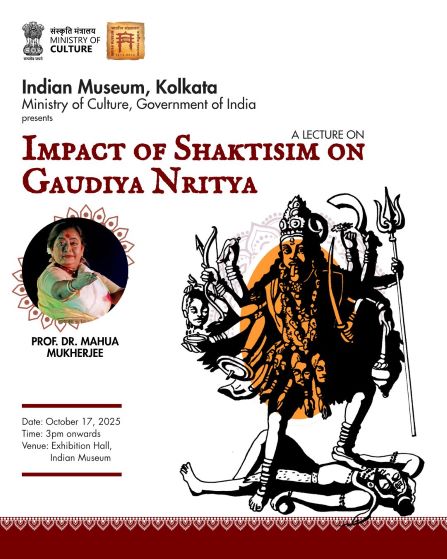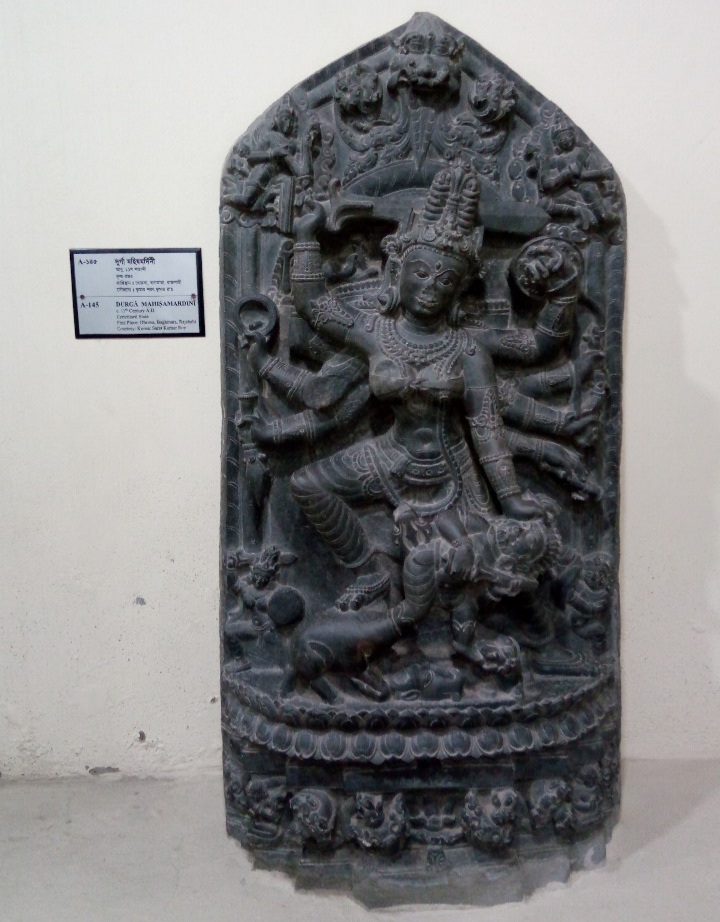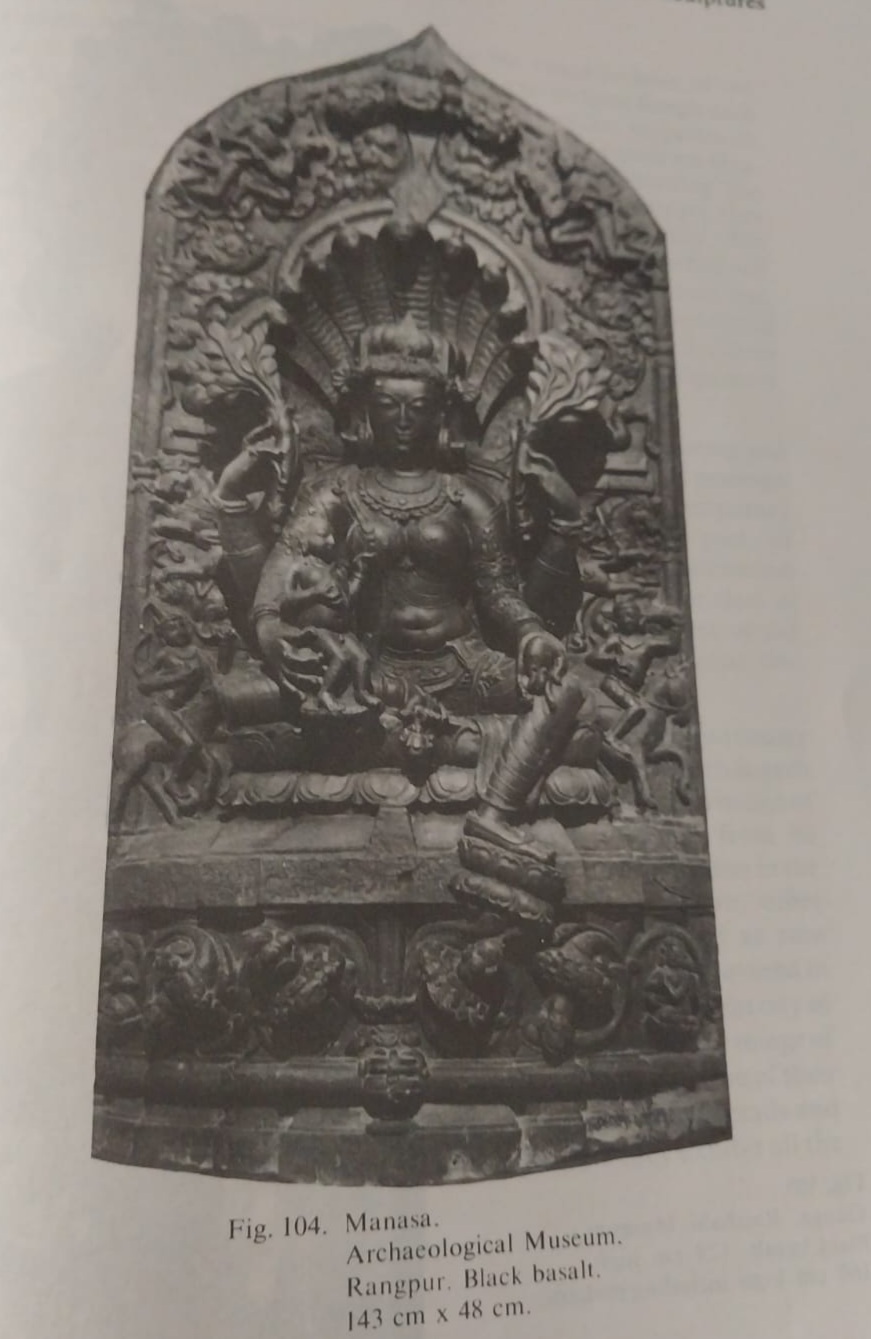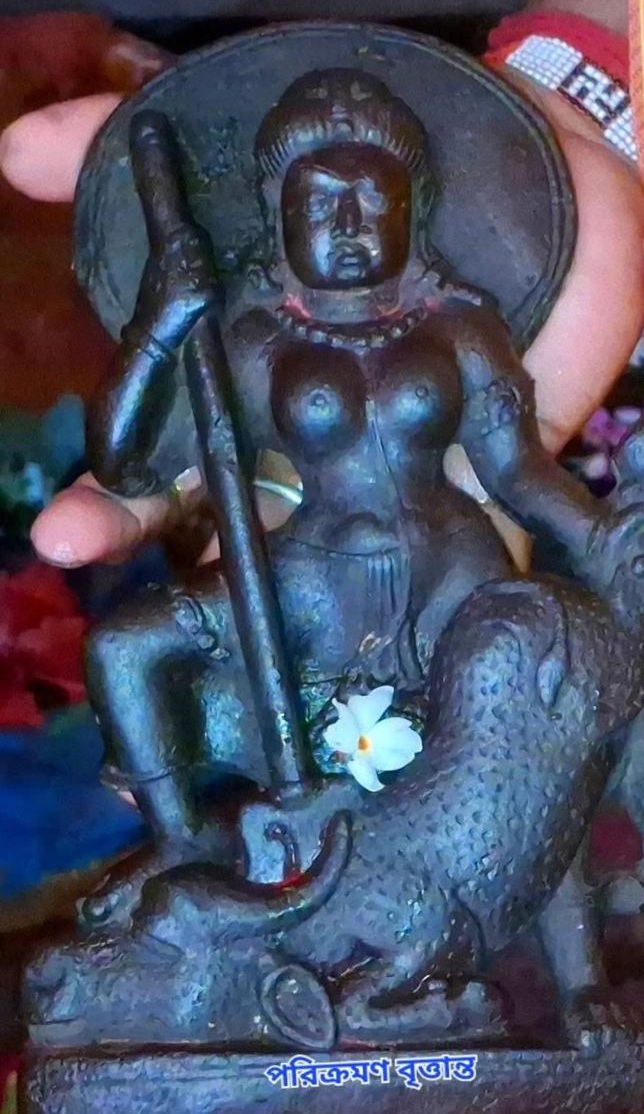Posted on 17 October 2025:

Shakti and Grace: Exploring Gaudiya Nritya Through the Lens of Shaktism
The Indian Museum, Kolkata, presents a profound cultural dialogue on October 17, 2025, as Prof. Dr. Mahua Mukherjee takes center stage to unravel the spiritual threads between Shaktism and Gaudiya Nritya.
This lecture, held at the Exhibition Hall from 3 PM onwards, promises to illuminate how divine feminine energy—Shakti—flows through the expressive vocabulary of Gaudiya dance.
India’s classical dance forms are like living documents—layered with stories, symbols and spiritual echoes from centuries past. Among them, Gaudiya Nritya stands as a graceful embodiment of Bengal’s devotional soul. As Prof. Dr. Mahua Mukherjee beautifully explains, this dance form is not a sudden invention, but a gentle reconstruction of cultural fragments drawn from different times and traditions.
“Throughout Bengal, there have been Shaivites, Shaktas and Vaishnavas, but the number of Shakta temples is particularly large. Even when the strong current of Vaishnavism swept across Bengal, the worship of Shakti remained unchanged.”— Prof. Mahua Mukherjee
The dance becomes a sacred offering, where each gesture honors the goddess’s many forms—fierce, nurturing and transcendent.
“Gaudiya Nritya is built on four strong pillars—art, history, scripture and tradition. But it is Shakti who gives it soul. Her presence flows through every gesture, every rhythm, every silence. Gaudiya Nritya is an art form meant primarily for spiritual expression, and it was originally a temple art. The Shakti cult, in particular, is one of the most important sources that enriched the Gaudiya Nritya repertoire — for example, through Ambika Stuti, Dashamahavidya, and so on.” — Prof. Mahua Mukherjee added.

Sacred art comes alive in a rare confluence of dance, sculpture and divine philosophy.
Prof. Dr. Mahua Mukherjee leads with Durgamangalacharan and verses from Dashamahavidya, joined by Dr. Soumya Bhowmick’s solo on Kali, evoking the goddess’s fierce grace through Gaudiya Nritya.
Dr. Paromita Banerjee’s sculpture demo adds visual depth, while a special presentation on Ardhanarishvar reflects the timeless balance of Shiva and Shakti.
A celebration of movement, meaning and spiritual memory.
Prof. Mukherjee, a revered scholar and practitioner, brings decades of wisdom to this exploration. Her insights will trace how the philosophy of Shaktism shapes the gestures, rhythms and emotional depth of Gaudiya Nritya, a classical dance form rooted in Bengal’s devotional traditions.
Whether you’re a student of dance, a seeker of spiritual art or simply curious about India’s rich traditions, this gathering offers a rare chance to witness scholarship and performance merge in graceful harmony.
Images: Dr. Mahua Mukherjee
- Image in the content above: 11th Cent. AD- Black stone image: Locality: Rajshahi. Preserved at Virendra Research Museum, Rajshahi. Courtsey: Shri Sharat Kr Roy
- Image below 1 : Devi Manasa — Black Basalt during the 12th CE – Pala-Sena Period — Archaeological Museum, Rangpur, Bangladesh.
- Image below 2 : Mahishamardini, during the 5th Cent, Gupta Period. Location: Kalna, East Bardhaman Dist., West Bengal. Courtsey: Dr. Rangan Kanti Jana, Former Curator Bardhaman University Museum.



